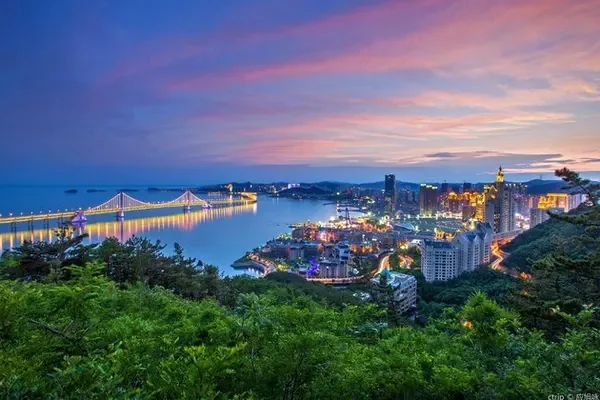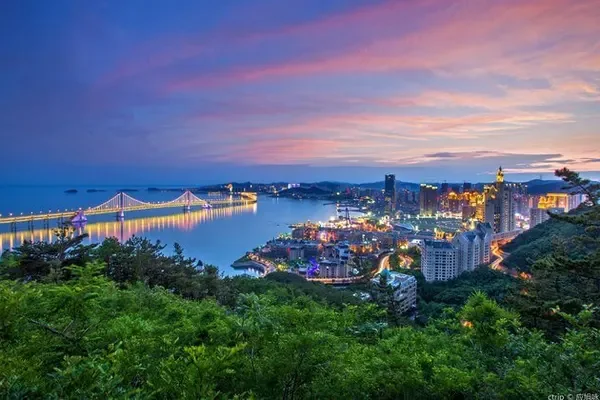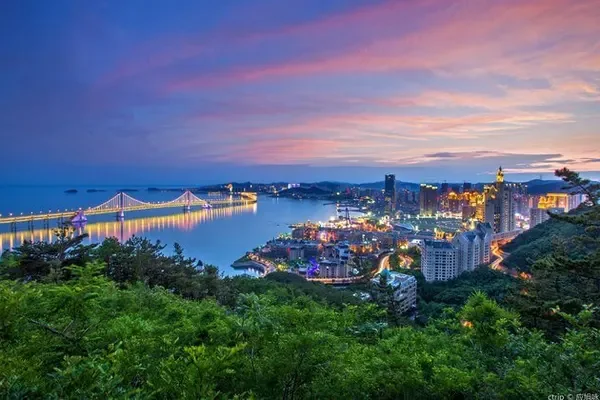

Lijiang, a place name inherited from ancient times, fills the ancient legends of Dongba with beauty and magic. The holy love in Jade Dragon Snow Mountain, the beautiful meeting by the Lugu Lake, the ancient love letters of the Naxi people. . . With a longing heart and a previous agreement, Lijiang, I finally set foot on your land again.


Time is short and the world is far away. In the future, all mountains and rivers will be completed quietly in one day and one night. In my life, I can only say that some things are unexpected, some things are reasonable, some things are uncontrollable, some things are unsatisfactory, some things are illogical, and some things are I am enlightened, but no matter what happens, don't forget your own heart, your kindness, your own character and your own principles.
If there is a destiny, time and space are not distances; if there is no destiny, it is useless to meet all day long. A wrong start may not lead to a perfect ending, nothing is certain in this world. They are all touching, waiting, and slowly searching.


Lashi Lake Yunnan's first international plateau wetland lake
"Mountain air is beautiful at sunset, and the birds return together." This poem is the best way to describe Lashi Lake. Compared with the bright and bright lakes and mountains, Lashi Lake is more like an idyllic scenery.



The nearby Ancient Tea-Horse Road still echoes with horseshoes from time to time, and thousands of birds inhabit here from time to time. When the local ponies reach the top of the mountain, you will be surprised to find patches of green wetlands embedded in the mountains. Whether it is watching from a distance, boating in the lake, or riding a horse for a while, people can't help but want to stay here, stay away from the hustle and bustle, and appreciate life.

Lashi Lake is located in the middle of Lashiba, 10 kilometers west of Lijiang County, and is the first nature reserve named after "wetland" in Yunnan Province. "Lashi" is a translation of the ancient Naxi language, "la" means barren dam, and "shi" means new, meaning new barren dam.

There is still a piece of water in the Lashi Haiba, which is called Lashi Lake, with an altitude of 2,437 meters. The seaside of Lashi has beautiful mountains and clear waters, dense forests and lush flowers and plants.

Baisha Ancient Town, the most original Naxi Ancient Town

Baisha Ancient Town, located at the foot of Jade Dragon Snow Mountain, is an ancient town about 12 kilometers north of Lijiang City. It is also known as the "Three Ancient Towns of Lijiang" together with Dayan Ancient Town and Shuhe Ancient Town. As the initial settlement of the Naxi people in Bazi, Lijiang, Baisha Ancient Town is the birthplace of the largest family in Lijiang, the "Mu family" of Lijiang Tusi, and the earliest political center of the Naxi people.

According to historical records, during the Tang Dynasty, when the King of Nanzhao named Yulong Snow Mountain as "Beiyue", the ancestors of the Mu family began to build Baisha Street and Beiyue Temple here. During the Song and Yuan dynasties, Baisha was the most prosperous time. As the residence of the Mu family, the ruler of Lijiang, it was the commercial, political and cultural center of Lijiang. In the early Ming Dynasty, the Mu family moved to Dayan Ancient Town, and Baisha's political and economic functions began to decline, and it gradually became the Mu family's back garden.


Today's Baisha Ancient Town has preserved a very complete Naxi-style architecture and many cultural relics. Many scholars believe that Baisha Ancient Town is the ancient town with the most Naxi heritage and the most original Naxi village. The center of the ancient town is a group of temples called "Mudu", a large square symbolizing political power, Fuguo Temple in Jietuo Forest (the mountain gate and main hall have been moved to Yuquan Park), Dabaoji Palace, Liuli Palace, Dading Pavilion and other religious buildings. The business plaza that helped the Mu family accumulate wealth is far smaller than the "Mudu Plaza", which shows that the Mu family still regards business as an accessory to their rights at this time.


Compared with the hustle and bustle of Dayan and Shuhe, Baisha Ancient Town is a relatively quiet place. Some people say that Baisha is Lijiang ten years ago. There are still many small Naxi courtyards of local people here, retaining the original flavor of the ancient town.

There is only one old commercial street in the ancient town, and the small shops selling souvenirs mainly sell two kinds of things, one is tie-dye, and the other is various antiques. Most of the stalls are leisurely old people. You can choose your favorite specialties in these special stalls, especially those small items related to Dongba culture. It is really a good choice for travel souvenirs or gifts to friends.


The strange thing is that although the streets here are relatively old, there are almost foreign-style English signs on the doors and windows on the street, and some shops can still use English to do business with foreigners. This is because most of the people who came to Baisha in the past were foreigners. They liked the simple and primitive Naxi folk customs here, and the locals learned foreign languages because of this.

There is a very famous scenic spot in the ancient town - Baisha murals, which are all murals of the Dongba nationality. "Baisha murals" began in the early Ming Dynasty and ended in the early Qing Dynasty, and lasted for more than 300 years. When you come to Baisha Ancient Town, you might as well come here to see the vivid murals and learn about Dongba culture.


Tourists who are tired of the bustling old town of Lijiang often come from Lijiang by bicycle, just because they can see the jade dragon snow and the clean atmosphere of the ancient town when they look up. Sit and drink tea in small shops on the street, stroll slowly in the streets of the ancient town, and chat with local old ladies in languages that they understand or do not understand. In this most original town among the three towns of Lijiang, you can Experience a different kind of fun.


Without the commercial atmosphere of Lijiang Old Town, it is closer to the original than Shuhe Ancient Town. This is the quaint and quiet Baisha Ancient Town. Simple houses, scattered with firewood and straw, occasional stone roads with horse manure, simple residents... There is no repeated business model after commercialization, and no tourists who are disturbed by transitional development. In the ancient town, you can experience the original Slow-paced life, feel the original taste of Naxi.


Go to Lijiang Old Town for a leisurely time


If you come to Lijiang, the most important thing you should not miss is Lijiang Old Town. It is not as noisy as Dali Ancient City, nor is it as simple as Shangri-La. She calmly welcomes visitors with her voice and smile. You can look forward to romantic encounters here, and you can just look for the lilac girl in your heart with an oil-paper umbrella by the stream house. Here, you can find what you want. The ancient city alleys of thousands of years, will Inclusive of all of you.


Dreamers Salmon Restaurant


Lijiang Old Town has a long history and is simple and natural. From the overall layout of the city to engineering and architecture, it integrates the essence of Naxi, Han, Bai, Yi and Tibetan nationalities. In 1986, the ancient city of Lijiang was listed as a national historical and cultural city, and its status in China's famous cities has been confirmed since then.


Unlike any royal city in China, the ancient city of Lijiang has not been affected by the construction of the Central Plains city with "nine miles on the square, three gates on the side, nine longitudes and nine latitudes in the middle school, and nine tracks on the way." There is no regular road network and no fortified city walls in the city. In the layout of the ancient city, three mountains are connected by screens and one river; ", up to" style; the buildings are close to the mountains and the water, patchwork.

The towns and buildings in the ancient city of Lijiang are the materialized forms of social life. Compared with government offices, temples and halls, residential buildings can better reflect the economic culture, customs and religious beliefs of ethnic groups and regions. The layout, structure and shape of the residential buildings in the ancient city of Lijiang are based on their own specific conditions and traditional living habits, combined with the traditions of the Han, Bai and Tibetan dwellings, and have boldly and boldly improved in terms of earthquake resistance, sunshade, rainproof, ventilation and decoration. Innovative development, which forms a unique style.




Naxiangyuan Restaurant

The streets of the ancient city are laid out neatly and freely. The main street is next to the river, the alleys are next to the canal, the roads extend along the straightness of the canal, and the houses are arranged according to the height of the terrain. Among these houses, the houses facing the street are mostly turned into shops, or the owner manages some small commodities by himself, or sublets others to operate them. For a long time, the Naxi people have formed a fine tradition of advocating nature and culture, and being good at learning and absorbing the advanced culture of other ethnic groups. This tradition especially had a great influence on the architectural art of folk houses.


Come to Lijiang, meet yourself, forget the past, stroll through the ancient city and feel the flowers and trees in the leisurely time. Let the one-meter sunshine in the afternoon shine into the soft place in my heart. Before you know it, you will find that you have come to the real Lijiang. Looking up, the blue sky and white clouds are so close to you, as if you will sit on the clouds if you jump hard. Wandering around, watching the shopkeepers in the shop lazily sitting in the shop chatting with the tourists without a word, I can't help feeling the comfortable life.






The poetic life of Shuhe Ancient Town

Winding along the ancient city of Lijiang to the northwest for 4.5 kilometers is the ancient and quiet Shuhe Town, also known as Longquan Village. This is one of the earliest settlements of the Naxi ancestors in Lijiang Bazi, and it was also an important post on the Ancient Tea Horse Road. It was listed as an important part of the "World Cultural Heritage" Lijiang Old Town in 1997.


Shuhe Ancient Town is surrounded by mountains and rivers, with well-arranged houses and gurgling water in the alleys. The environment is simple and quiet. What is rare is that due to the later development, Shuhe Ancient Town is much quieter and simpler than Lijiang Ancient Town, without such a heavy commercial atmosphere, and there are not so many tourists. There is only a clear spring, which gushes passionately from a high place, and goes all the way around the village. flowing. The sky is high and blue, the sun is warm and transparent, and the air is fresh and refreshing. This is the rustic countryside in memory.




Walk in from the large archway with the words "Shuhe Ancient Town" hanging on the carved beams and painted buildings, and walk along the stone pavement with shops on both sides to the center of the ancient town. Like the ancient city of Lijiang, it is also called Sifang Street.



Back then, Sifang Street was a place where caravans traded fur goods. Today’s Sifang Street is surrounded by various shops, with old wooden facades, dark red paint, black and bright bluestone in front of the shops, and mottled stone slopes under your feet. Feel the prosperity of the year.




To enter the Shuhe River, you must pass through the Qinglong Bridge at the entrance of the village. Although it has a history of more than 400 years, the bridge is still wide and flat. Ancient stone bridges, smooth stone roads, high horse-mounting stones, mansions in Maguotou, as well as saddles, horse bells, lanterns, leather bags, butter barrels, and various old goods from India, Nepal, and Tibet, Looking back at the present and the past, let your imagination run wild.



The clear and blue Qinglong River flows under the bridge, and there are dense poplar and willow trees beside the river. An old Naxi man who smokes leisurely with a pipe in his mouth may drink a cup of Pu'er tea with you. Go down the Qinglong River and go up the river, sometimes a little anxious, sometimes a little more stable, there are stone slabs in twos and threes in the middle, like plum blossom piles in martial arts, bouncing and jumping, I practiced for an afternoon without knowing it.





You don’t need to see too many scenic spots in Shuhe. Sitting in the inn to bask in the sun, staring in a daze in a specialty coffee shop, just the quiet bridge and flowing water, and the leisurely old Naxi are enough to make people feel happy...








